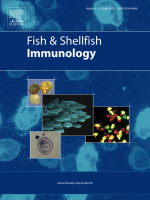Kor G, Mengal K, Buřič M, Kozák P, Niksirat H. 2023. Granules of immune cells are the source of organelles in the regenerated nerves of crayfish antennae. Fish & Shellfish Immunology 137: 108787. https://doi.org/10.1016/j.fsi.2023.108787
Abstract
Regeneration refers to the regrowing and replacing of injured or lost body parts. Crayfish antennae are nervous organs that are crucial for perceiving environmental signals. Immune cells (hemocytes) are responsible for neurogenesis in crayfish. Here, we used transmission electron microscopy to investigate at ultrastructural levels the potential roles of immune cells in nerve regeneration in crayfish antennae after amputation. The results showed that, while all three types of hemocytes were observed during nerve regeneration, granules of semi-granulocytes and granulocytes are the main sources of new organelles such as mitochondria, the Golgi apparatus and nerve fibres in the regenerated nerves of crayfish antennae. We describe the transformation of immune cell granules into different organelles in the regenerating nerve at ultrastructural levels. Also, we observed that the regeneration process speeds up after crayfish moulting. In conclusion, the granules are compacted packages of versatile materials carried by immune cells and can be converted into different organelles during nerve regeneration in crayfish antennae.
Keywords: None.






